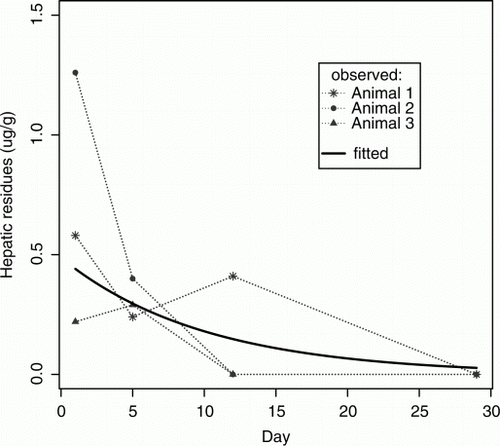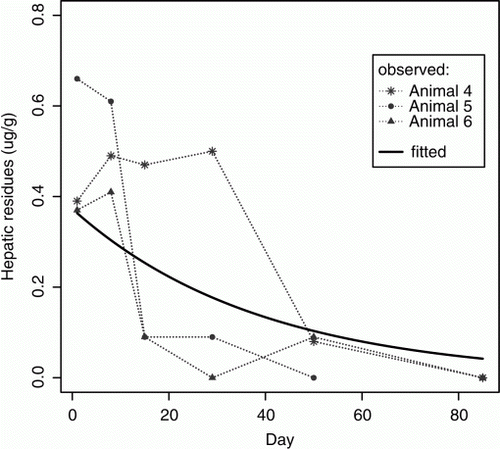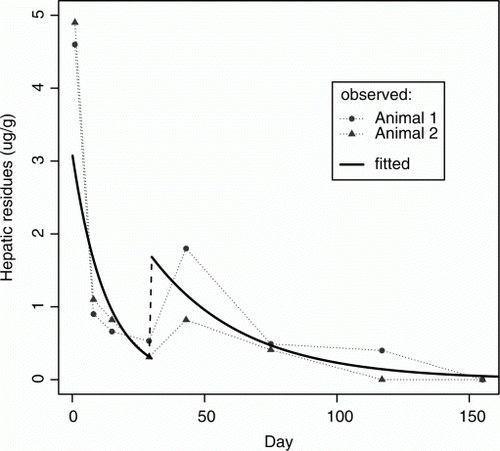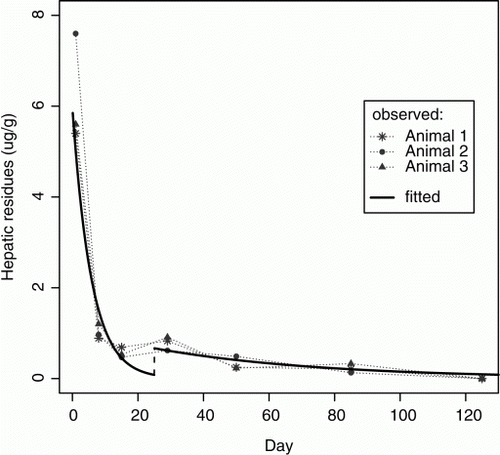Figures & data
Figure 1 Liver concentrations observed in samples biopsied from red deer at set times following a single oral dose of 1.5 mg/kg diphacinone (n = 3, MDL = 0.10–0.20 ug/g). The curve illustrates the fitted values from a mixed effects exponential decay model.

Table 1 Liver concentrations detected in samples biopsied from red deer at set times following a single oral dose of 1.5 mg/kg diphacinone (n = 3, MDL = 0.10–0.20 ug/g) or 8.25 mg/kg coumatetralyl (n = 3, MDL = 0.05–0.20 ug/g).
Figure 2 Liver concentrations detected in samples biopsied from red deer at set times following a single oral dose of 8.25 mg/kg coumatetralyl (n = 3, MDL = 0.05–0.20 ug/g). The curve illustrates the fitted values from a mixed effects exponential decay model.

Figure 3 Liver concentrations detected in samples taken from pairs of pigs euthanised at set times following a single oral dose of 1.5 mg/kg diphacinone (n = 10, MDL = 0.05 ug/g). The curve illustrates the fitted values from a standard exponential decay model.

Table 2 Liver concentrations detected in samples taken from pairs of pigs euthanised at set times following a single oral dose of 1.5 mg/kg diphacinone (n = 10, MDL = 0.05 ug/g).
Table 3 Liver concentrations detected in samples biopsied from cattle at set times following a single oral dose of 1.5 mg/kg diphacinone in trial 1 (n = 2, MDL = 0.10 ug/g) and trial 2 (n = 3, MDL = 0.10–0.20 ug/g).
Figure 4 Liver concentrations detected in samples biopsied from cattle at set times following a single oral dose of 1.5 mg/kg diphacinone in trial 1 (n = 2, MDL = 0.10 ug/g). The curve illustrates the fitted values from a mixed effects exponential decay model.

Figure 5 Liver concentrations detected in samples biopsied from cattle at set times following a single oral dose of 1.5 mg/kg diphacinone in trial 2 (n = 3, MDL = 0.10–0.20 ug/g). The curve illustrates the fitted values from a mixed effects exponential decay model.
